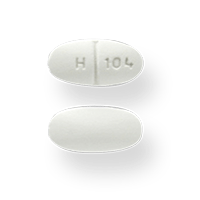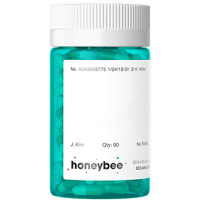According to the Center for Disease Control (CDC), more than 34 million Americans currently have diabetes, with the majority (90-95%) diagnosed with type 2 diabetes. Most commonly this condition impacts adults 45 years or older, but medical professionals have observed an increasing number of children, teens, and young adults who are also developing the disease. The disease also develops at higher rates among people who are Black, Hispanic, American Indian, or Asian-American.
Type 2 Diabetes

Type 2 diabetes is a medical condition where your body struggles to process sugar, either due to a lack of insulin or a resistance to it. Insulin is an essential hormone that helps your cells utilize sugar as a source of fuel. With type 2 diabetes, the body’s difficulty with insulin leads to high blood sugar levels, which causes other serious conditions such as heart disease, vision loss, and kidney disease.
Medical professionals and scientists don’t yet understand the exact cause of type 2 diabetes, although they believe genetics, environmental factors, lack of exercise, and being overweight can all contribute.

People affected
Risk Factors
There are a variety of risk factors for type 2 diabetes, such as:
Obesity/being overweight: This is one of the biggest risk factors for developing type 2 diabetes. That being said, you can still have type 2 diabetes even if you are not overweight.
Fat distribution: Different people store fat in different places on their body. You are at a higher risk of type 2 diabetes if you store fat around your stomach and abdomen.
Lack of exercise: A sedentary lifestyle that lacks in physical activity increases the risk of type 2 diabetes.
Family history of type 2 diabetes: If one of your immediate family members has type 2 diabetes, you have an increased risk of developing the condition.
Prediabetes: This is not the same as type 2 diabetes. However, it is a condition where your blood sugar levels are abnormally high, which can ultimately lead to a diagnosis of type 2 diabetes.
Gestational diabetes: Some people develop this condition while pregnant. If this happens to you, you are more likely to later develop type 2 diabetes.
Tobacco: Smoking and using other forms of tobacco can increase your risk of diabetes complications.
Polycystic ovarian syndrome (PCOS): PCOS is one of the most common causes of female infertility. According to the CDC, more than half of women with PCOS develop type 2 diabetes by age 40.
Signs & Symptoms
Some people go years without symptoms, leading to a delayed diagnosis of the disease. Keep an eye out for the following signs or symptoms, which may start out as mild:
Feeling hungrier
Feeling thirstier
Going pee more often
Unintentional weight loss
Fatigue
Blurred vision
Sores that heal slowly
Frequent infections
Skin darkening in certain areas, especially the armpits and neck
Kidney complications
If blood sugar levels are not properly regulated, it can lead to either hyperglycemia or hypoglycemia in people with type 2 diabetes. Hyperglycemia means your blood sugar levels are too high. This can happen over time gradually, and it requires a visit with your doctor so that your medication can be adjusted. Symptoms can include:
Extreme thirst
Frequent urination
Tiredness
Listlessness
Nausea
Dizziness
Confusion
Loss of consciousness
By contract, hypoglycemia means your blood sugar levels are too low. This can happen if you exercise too much, eat meals later than normal, or drink too much alcohol. Symptoms can include:
Racing pulse
Cold sweats
Headache
Pale face
Intense hunger
Shivering
Feeling weak in the knees
Restlessness, nervousness, or anxiety
Difficulty concentrating
Confusion
Loss of consciousness
If this happens, try to eat or drink something with real sugar in it (not artificial sweeteners).You can refer to the “rule of 15.” That is when you take 15 grams of glucose (i.e. ½ cup of juice or non-diet soda, 1 tablespoon of sugar or honey, or 3-4 glucose tablets). Recheck blood glucose in 15 minutes. If you are still experiencing hypoglycemia, take another 15 grams of glucose. Once blood sugar normalizes, have a small meal or a snack to prevent recurrence.
Pharmacist Tip
Taking insulin or starting a new dose in medication can cause unexpected dips in blood sugar. Keep glucose tablets handy in case of urgent situations like hypoglycemia. On that note, the timing of your medication with food can affect blood sugar levels. For example, sulfonylureas like glimepiride and glipizide should be taken 15 to 30 minutes before a meal. However, if you are planning to skip a meal, skip the medication dose as well. This is because if you take the medication but skip the meal, your blood sugar levels could drop dangerously low.
Overall, it’s a good idea to keep a log of your blood sugar levels. This will help your provider and/or pharmacist adjust your medication dose and the timing of your medication accordingly. It is also important to note that if you are currently taking high blood pressure medications like atenolol, metoprolol, propranolol, bisoprolol, or other beta-blockers, pay attention to symptoms such as increased sweating, dizziness, shakiness, or hunger. These medications can mask the symptoms of low blood sugar.
Lastly, there are certain vaccinations such as the flu shot, the pneumonia vaccine, and the hepatitis B vaccine that are especially important to get if you have type 2 diabetes. Please speak to your doctor and/or pharmacist to ensure you are up to date on your vaccines.
Medical Experts
Primary Care Doctor: Your general doctor can diagnose and treat type 2 diabetes. They will also likely monitor the health of your kidney, as type 2 diabetes can lead to kidney failure.
Endocrinologist: An endocrinologist is a doctor that specializes in the treatment of disorders that affect the endocrine (“hormone”) system. That includes type 2 diabetes and the hormone insulin. While your primary care doctor is likely the one to diagnose your type 2 diabetes, they might refer you to an endocrinologist if you have a more complicated case of diabetes, you are struggling to successfully manage your diabetes, your treatment is not working, you have complications from the disease, or if your primary care doctor does not have a lot of experience treating diabetes.
Registered Dietician: A registered dietician (RD) can help you create and maintain a healthier diet and/or meet weight loss goals, which in turn can help manage your diabetes symptoms and prevent complications. Ideally, find a registered dietician who is also a certified diabetes educator (CDEs), as this means they specialize specifically in nutrition for diabetes.
Podiatrist: A podiatrist is a doctor that specializes in feet. They are often part of a diabetes care team because type 2 diabetes can cause foot problems and complications, which can lead to nerve damage, foot ulcers, weakened bones, and even amputations.
Ophthalmologist: Ophthalmologists are doctors who specialize in diagnosing and treating eye diseases. Eye problems can be a complication of type 2 diabetes, including vision loss. However, these complications are typically preventable as long as you regularly have your eyes checked by an ophthalmologist.
Diagnosis
Type 2 diabetes is typically easy to diagnose with a simple blood test.
Prescription Treatment
The prescription medication metformin (Glucophage) is typically the first option for managing type 2 diabetes. It is always preferred to start with oral treatment options rather than insulin or other injectables. Other options can also include sulfonylureas (such as glimepiride and glipizide), meglitinides (such as repaglinide), thiazolidinediones (such as pioglitazone), dipeptidyl peptidase IV inhibitors (such as sitagliptin), and α-glucosidase inhibitors (such as acarbose). Please note this is not a complete list of medications available.
Not all generics are the same. Different people respond better to different versions of the same drug, depending on the manufacturer. You can search our website to find the best fit for you.
Lifestyle Remedies
There are a variety of healthy habits you can adopt to help prevent type 2 diabetes or, if you already have it, to prevent complications. Try to eat a healthy diet low in fat, sugar, calories, but high in fiber (that means plenty of fruits, vegetables, and whole grains). Also try eating consistently to help prevent hypoglycemia.
Regular exercise can also help, even if it’s just taking a long walk every day. Try to engage in at least 150 minutes of moderate intensity or at least 75 minutes of vigorous intensity exercise per week.
Take frequent breaks so that you are never sitting still for long periods. Lastly, if you are overweight, losing 5 to 10 percent of your body weight can greatly help reduce your risk of the disease and complications. Both a healthy diet and regular exercise can help with weight loss.

